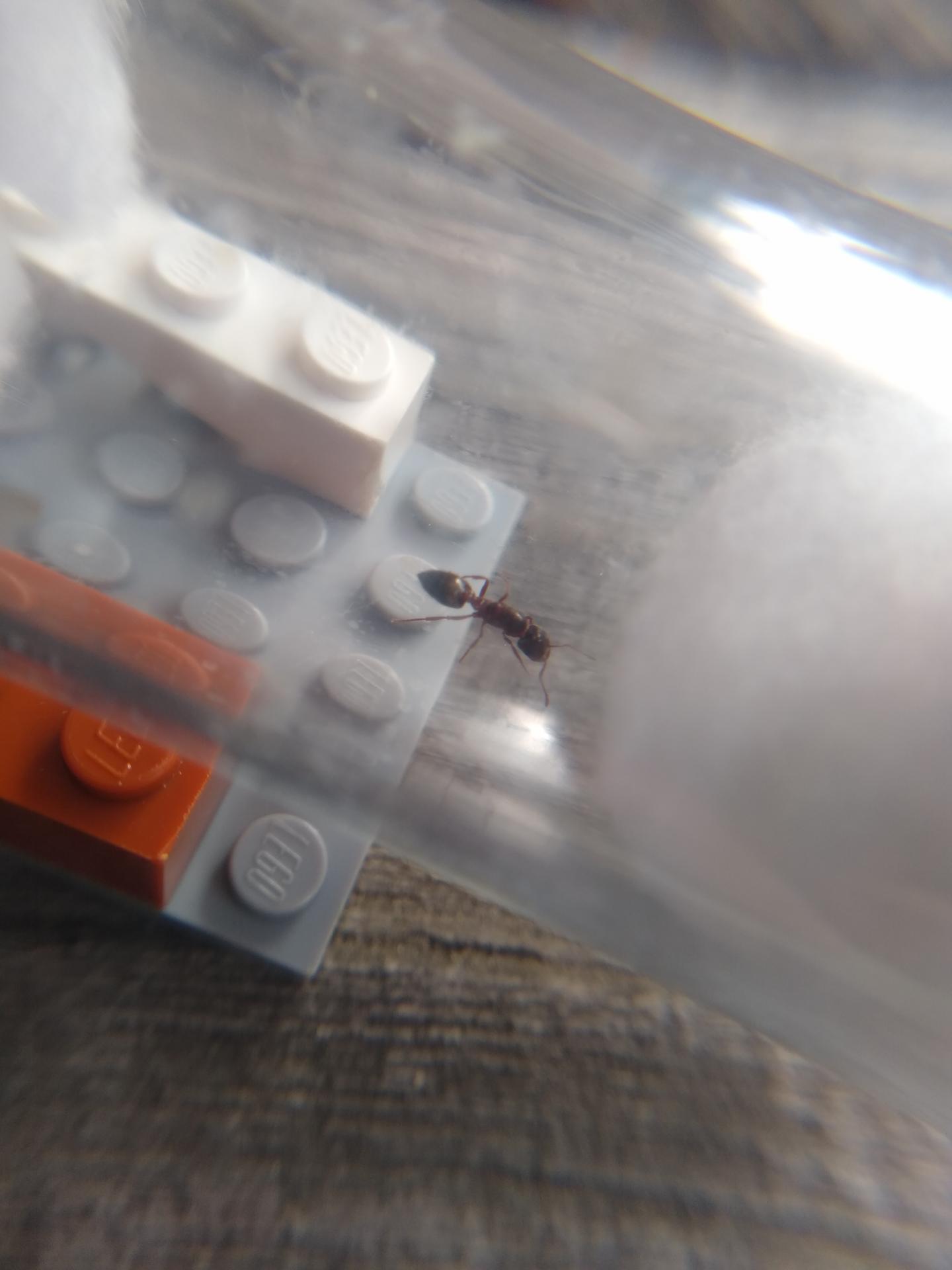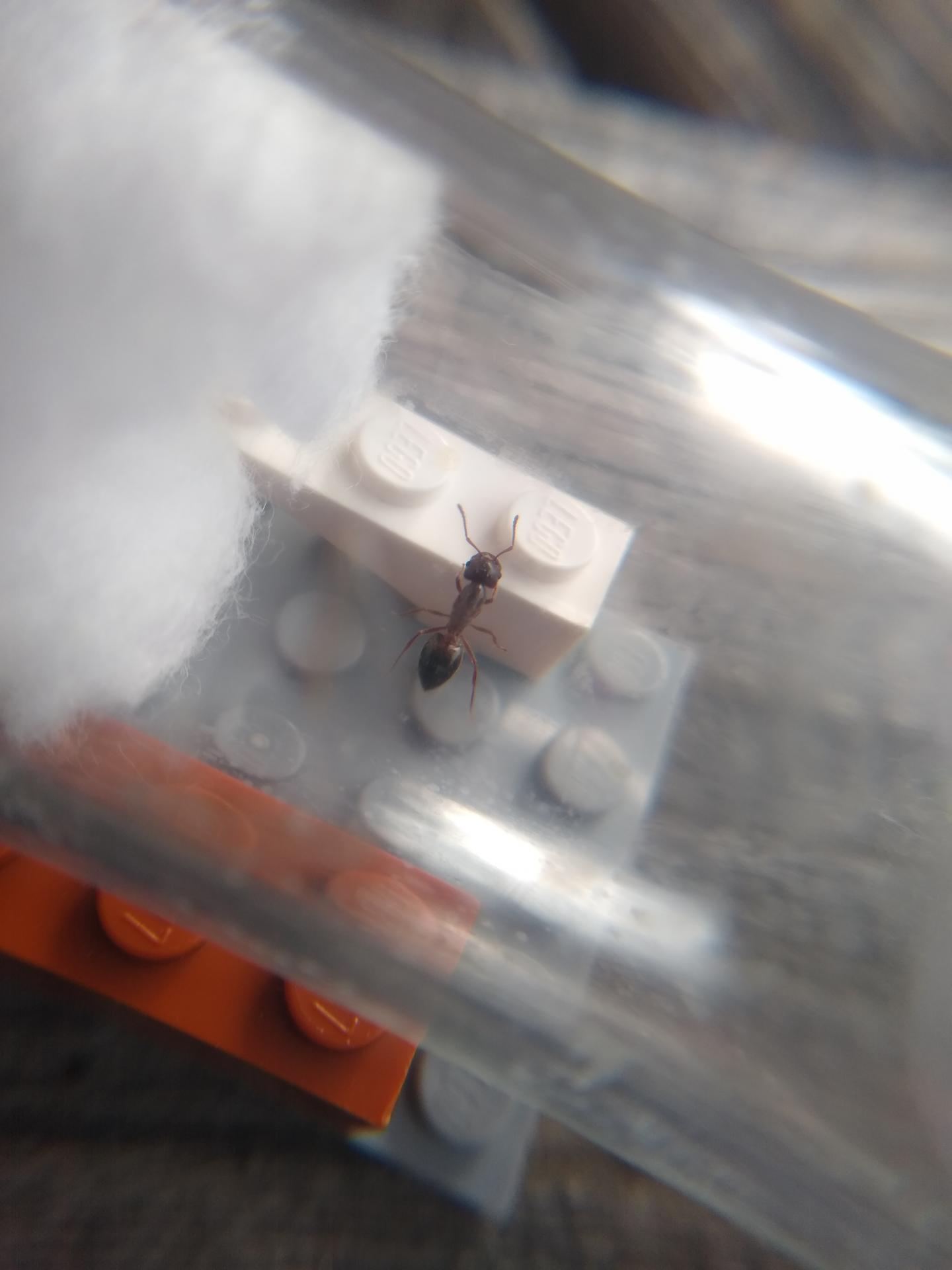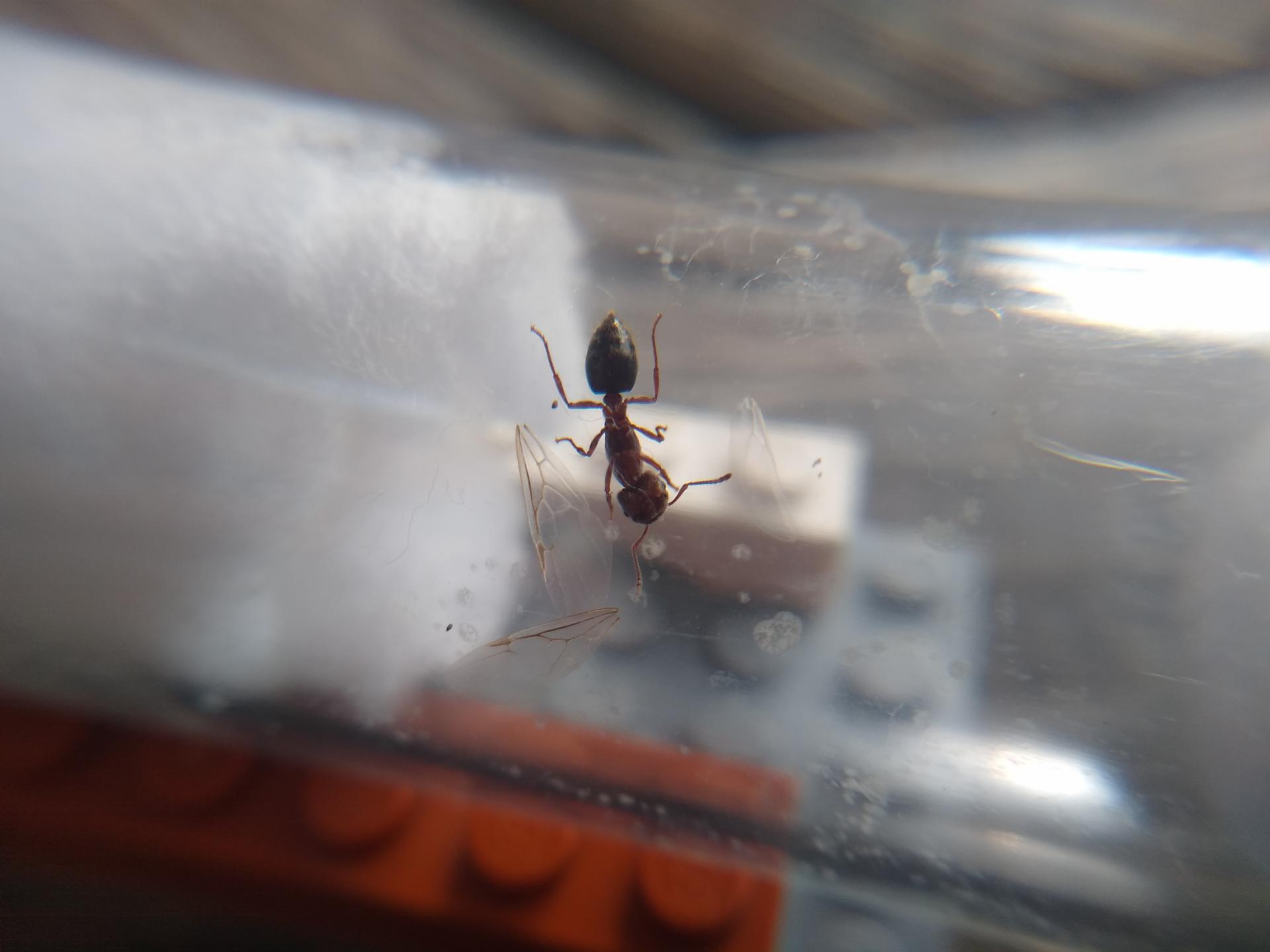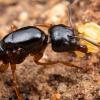- Formiculture.com
- Forums
- Gallery
- Members
- Member Map
- Chat

Queen or male alate?
Started By
Bashland
, Jun 22 2021 5:08 PM

Best Answer ponerinecat , June 22 2021 - 6:53 PM
Crematogaster mutans, ID suggested by M_Ants
Go to the full post
8 replies to this topic
#1
 Offline
-
Posted June 22 2021 - 5:08 PM
Offline
-
Posted June 22 2021 - 5:08 PM
1. Location (on a map) of collection: Trabuco Canyon, Orange County, CA
2. Date of collection: June 21, 2021
3. Habitat of collection: oaky forest near tiny creek in canyon
4. Length (from head to gaster): unknown, guess about 10mm
5. Color, hue, pattern and texture: charcoal head and gaster, with thorax slightly lighter, pointed gaster with lighter stripes and small hairs. Legs look a little lighter and possibly reddish in sun
6. Distinguishing characteristics: pointed gaster?
7. Distinguishing behavior:
8. Nest description: unknown
9. Nuptial flight time and date: June 21, 2021 between 830p and 9p
I caught this along with some solenopsis queens last night. Thought it was a male alate due to the slightly shorter gaster but it dropped its wings which I expected from queens. Not sure if males drop their wings before dying. I could just wait to see if it dies or lays eggs, but I'm curious about the species too because I don't think it is solenopsis like the queens. Thanks in advance!
2. Date of collection: June 21, 2021
3. Habitat of collection: oaky forest near tiny creek in canyon
4. Length (from head to gaster): unknown, guess about 10mm
5. Color, hue, pattern and texture: charcoal head and gaster, with thorax slightly lighter, pointed gaster with lighter stripes and small hairs. Legs look a little lighter and possibly reddish in sun
6. Distinguishing characteristics: pointed gaster?
7. Distinguishing behavior:
8. Nest description: unknown
9. Nuptial flight time and date: June 21, 2021 between 830p and 9p
I caught this along with some solenopsis queens last night. Thought it was a male alate due to the slightly shorter gaster but it dropped its wings which I expected from queens. Not sure if males drop their wings before dying. I could just wait to see if it dies or lays eggs, but I'm curious about the species too because I don't think it is solenopsis like the queens. Thanks in advance!
#2
 Offline
-
Posted June 22 2021 - 5:11 PM
Offline
-
Posted June 22 2021 - 5:11 PM
It's not a male, but if it is a queen I don't know what species.
#3
 Offline
-
Posted June 22 2021 - 5:14 PM
Offline
-
Posted June 22 2021 - 5:14 PM
Interesting, I’ve never seen anything like this before. If it dropped its wings it’s probably a queen.
#4
 Offline
-
Posted June 22 2021 - 6:43 PM
Offline
-
Posted June 22 2021 - 6:43 PM
Whoa. This is a species of Crematogaster that is either severely starved and somewhat deformed or just weird in general. Queen as well, I'll check the californian species.
- Bashland likes this
#5
 Offline
-
Posted June 22 2021 - 6:53 PM
Best Answer
Offline
-
Posted June 22 2021 - 6:53 PM
Best Answer
Crematogaster mutans, ID suggested by M_Ants
- Bashland likes this
#6
 Offline
-
Posted June 22 2021 - 8:14 PM
Offline
-
Posted June 22 2021 - 8:14 PM
Yes, this is Crematogaster mutans. You will need host workers for her, this is a parasitic species.
- Manitobant and Bashland like this
Hi there! I went on a 6 month or so hiatus, in part due, and in part cause of the death of my colonies.
However, I went back to the Sierras, and restarted my collection, which is now as follows:
Aphaenogaster uinta, Camponotus vicinus, Camponotus modoc, Formica cf. aserva, Formica cf. micropthalma, Formica cf. manni, Formica subpolita, Formica cf. subaenescens, Lasius americanus, Manica invidia, Pogonomyrmex salinus, Pogonomyrmex sp. 1, Solenopsis validiuscula, & Solenopsis sp. 3 (new Sierra variant).
#7
 Offline
-
Posted June 22 2021 - 9:08 PM
Offline
-
Posted June 22 2021 - 9:08 PM
Thanks everyone! I don’t have any host workers (this was in the first batch of queens I’ve ever caught), so I guess I’ll let it live out it’s days as best I can.
#8
 Offline
-
Posted June 23 2021 - 8:56 AM
Offline
-
Posted June 23 2021 - 8:56 AM
if you can’t find crematogaster workers, i would just release her. No point in just letting her die. Finding workers should be easy though, as they are definitely in the area you caught the queen. Callows are recommended, but normal workers could work if you chill them.Thanks everyone! I don’t have any host workers (this was in the first batch of queens I’ve ever caught), so I guess I’ll let it live out it’s days as best I can.
- Bashland likes this
My journals:
Polyergus Mexicanus: https://www.formicul...gs/#entry175528
Lasius minutus: https://www.formicul...cs/#entry174811
Lasius latipes: https://www.formicul...gs/#entry206449
General acanthomyops journal: https://www.formicul...yops-with-eggs/
Polyergus Mexicanus: https://www.formicul...gs/#entry175528
Lasius minutus: https://www.formicul...cs/#entry174811
Lasius latipes: https://www.formicul...gs/#entry206449
General acanthomyops journal: https://www.formicul...yops-with-eggs/
#9
 Offline
-
Posted June 26 2021 - 6:02 PM
Offline
-
Posted June 26 2021 - 6:02 PM
crematogaster mutans parasitic crematogaster
What i am keeping Brachymyrmex patagonicus 1 worker x5 tetramorium immigrans 10 workers x2 lasius crypticus 5 workers Pheidole californica 6 queens150~ workers 10-30 majors, Formica argentea 10~ W
What I've kept crematogaster sp pheidole californica camponotus vicinus high elev, dumetorum,laevigatus, prenolepis imparis, pogonomyrmex californicus and subnitidus and californicus, veromessor andrei, camponotus sayi, hypoponera opacior ,Liometopum occidentale solnopsis molesta group, solenopsis xyloni.
0 user(s) are reading this topic
0 members, 0 guests, 0 anonymous users






















